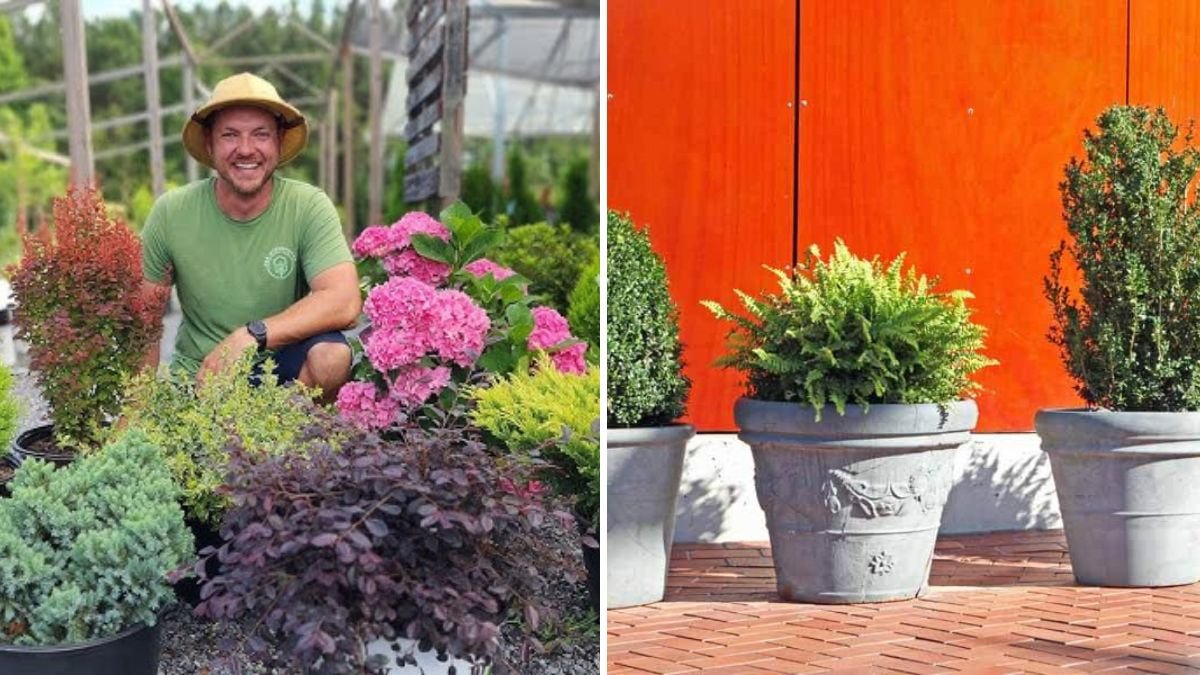Container gardening has become an increasingly popular solution for urban spaces, patios, balconies, and small gardens. Among container plants, compact shrubs stand out for their versatility, structure, and visual appeal. Unlike large shrubs that can overwhelm a limited space, compact varieties remain manageable, yet provide year-round interest, texture, and sometimes fragrance or seasonal blooms. By selecting the right compact shrubs and following proper care techniques, gardeners can create stunning, thriving container displays that elevate their outdoor and indoor environments.
This article explores the best compact shrubs for container gardening, including plant selection, container choice, soil preparation, watering, fertilization, pruning, and design strategies for creating lush, beautiful displays.
1. Understanding Compact Shrubs
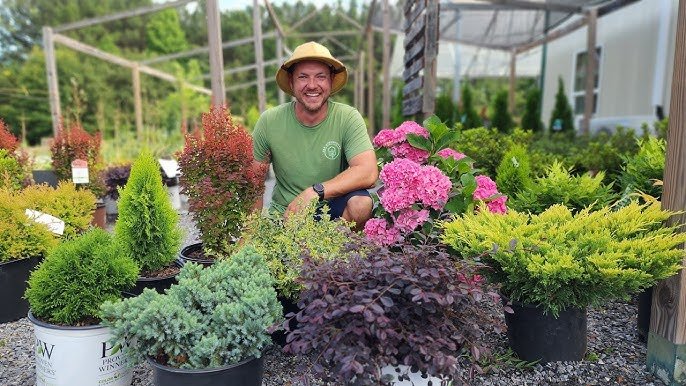
Compact shrubs are smaller varieties of shrubs that grow slowly or maintain a naturally small size, typically under 3 feet in height and width. They are ideal for container gardening because:
- Space Efficiency: They thrive in limited spaces without the need for large garden beds.
- Manageable Growth: Their size makes pruning, maintenance, and repotting easier.
- Aesthetic Appeal: Offer structure, greenery, and sometimes flowers or berries, adding year-round beauty.
- Versatility: Suitable for indoors, patios, balconies, terraces, and entryways.
Some examples include dwarf boxwood, miniature hydrangeas, compact azaleas, and small-leaved conifers.
2. Selecting the Right Compact Shrubs
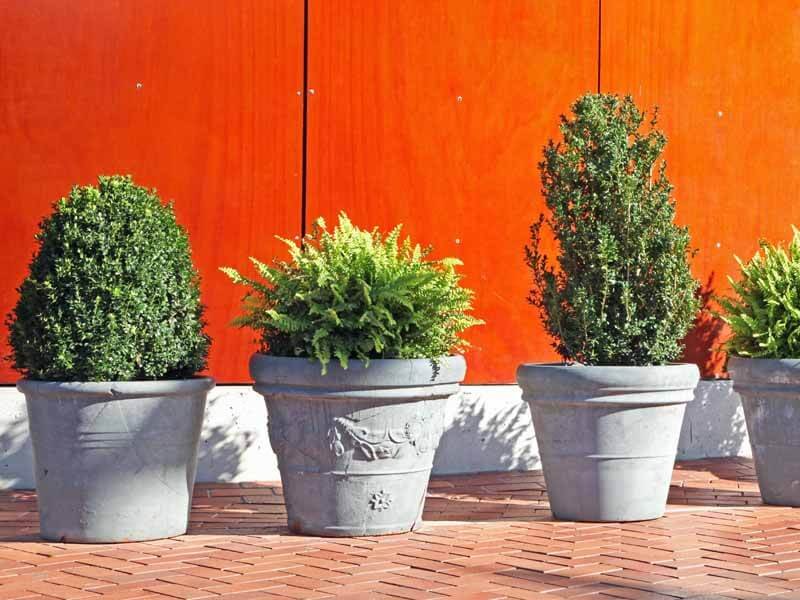
Choosing shrubs that adapt well to container life is essential:
- Growth Habit: Choose naturally slow-growing or dwarf varieties to prevent overcrowding.
- Climate Compatibility: Select species suited to your local weather conditions.
- Sunlight Needs: Determine whether the shrub prefers full sun, partial shade, or shade.
- Soil and Water Requirements: Opt for shrubs tolerant of container conditions, where soil dries faster than in-ground gardens.
Recommended compact shrubs for containers:
- Boxwood (Buxus spp.): Evergreen, dense foliage, ideal for hedges, topiaries, and geometric shapes.
- Dwarf Hydrangeas: Compact flowering shrubs with vibrant blooms; prefer partial sun and rich soil.
- Azaleas: Colorful, compact, and evergreen or semi-evergreen varieties perfect for small spaces.
- Dwarf Conifers: Slow-growing evergreens, including dwarf pines and spruces, providing year-round structure.
- Lavender (Dwarf Varieties): Compact aromatic shrubs with purple blooms, attracting pollinators.
- Dwarf Rhododendrons: Evergreen flowering shrubs that tolerate partial shade.
- Heathers (Calluna vulgaris): Low-growing, colorful foliage with seasonal flowers, ideal for sun-exposed containers.
- Dwarf Nandina (Heavenly Bamboo): Offers attractive foliage and red berries, suitable for sun or partial shade.
By mixing foliage textures, colors, and seasonal blooms, gardeners can achieve a lush and dynamic container display.
3. Choosing the Right Container
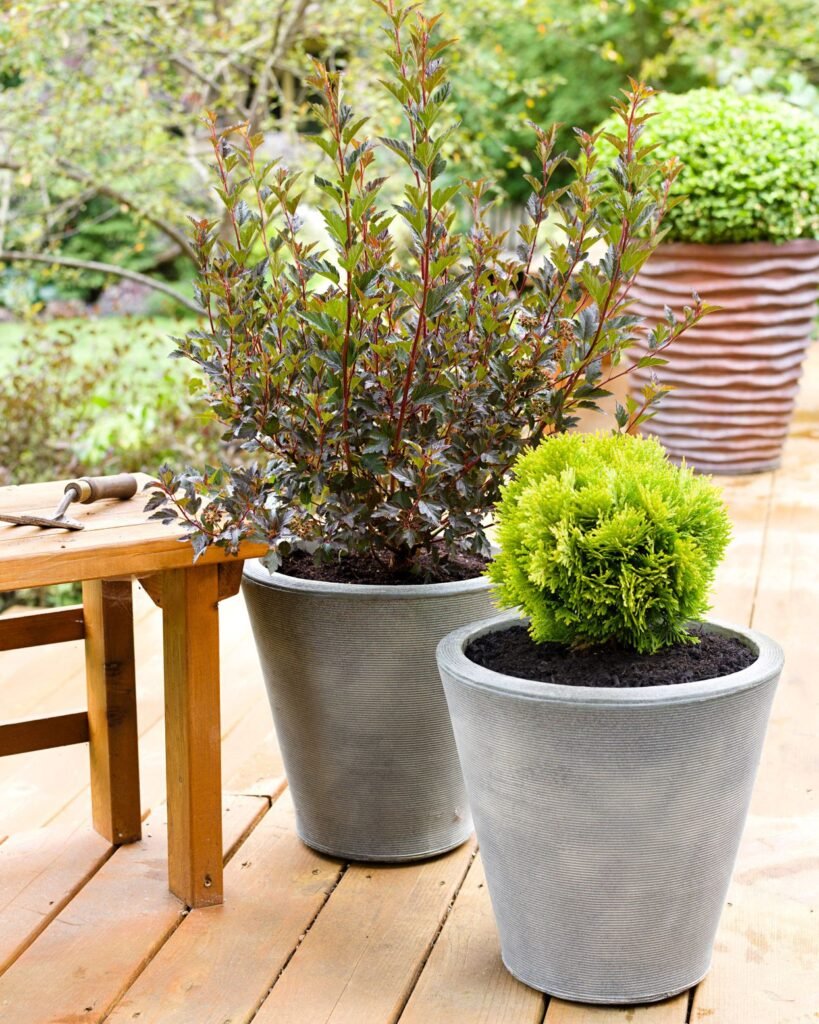
Container selection is as important as the plant:
- Size: Ensure containers are deep and wide enough to accommodate root growth. Shrubs generally need at least 12–18 inches in diameter and depth for compact varieties.
- Material: Terracotta, ceramic, metal, or plastic—each has benefits. Terracotta is breathable but dries fast, while plastic retains moisture.
- Drainage: Drainage holes are critical to prevent waterlogging, root rot, and fungal diseases.
- Weight and Stability: Consider the weight of soil and the mature size of the shrub. Wide bases or heavier containers prevent tipping in wind or storms.
Proper containers ensure healthy root development and stability, crucial for thriving shrubs.
4. Soil Requirements
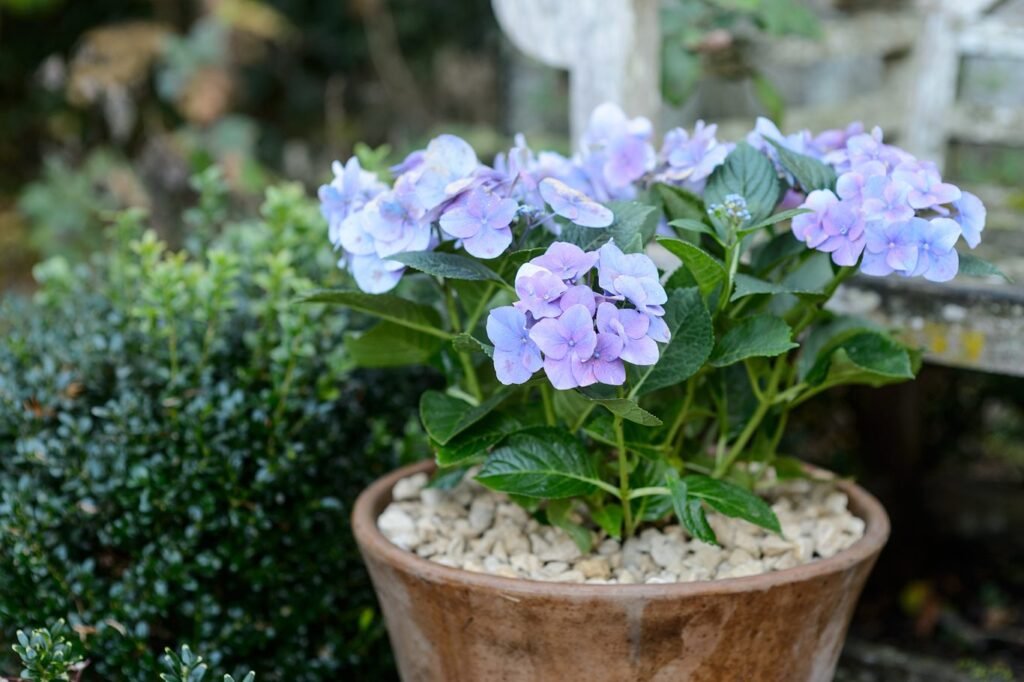
Compact shrubs require a well-draining, nutrient-rich soil mix:
- Basic Potting Mix: Combine high-quality potting soil with compost for nutrients.
- Drainage Improvement: Add perlite, sand, or fine gravel to prevent waterlogging.
- Moisture Retention: Incorporate coconut coir, peat moss, or well-rotted organic matter.
- pH Level: Most shrubs prefer slightly acidic to neutral soil (pH 6.0–7.0).
Regularly replenishing or refreshing the soil helps maintain vigor and flowering potential.
5. Sunlight and Placement
Sunlight directly influences shrub growth, flowering, and overall health:
- Full Sun Shrubs: Dwarf lavender, heathers, and some boxwoods thrive with at least 6 hours of sun per day.
- Partial Shade Shrubs: Hydrangeas, azaleas, and rhododendrons perform better with filtered light.
- Indoor Placement: Position containers near bright windows or use grow lights to supplement light requirements.
- Seasonal Movement: Move containers to protect from harsh sun, frost, or heavy wind, especially for delicate varieties.
Matching shrubs to sunlight conditions ensures strong growth, dense foliage, and abundant blooms.
6. Watering Guidelines
Containers dry out faster than ground soil, so consistent watering is essential:
- Check Moisture Regularly: Stick a finger 1–2 inches into the soil. Water when the topsoil feels dry.
- Deep Watering: Water thoroughly to reach the root zone. Allow excess to drain to avoid waterlogging.
- Avoid Overwatering: Excess water can cause root rot, yellow leaves, and stunted growth.
- Mulching: Top-dress soil with bark, stones, or compost to retain moisture and regulate soil temperature.
Proper watering promotes healthy foliage, strong roots, and continuous flowering.
7. Fertilization
Container-grown shrubs require regular feeding:
- Slow-Release Fertilizers: Incorporate during planting for long-term nutrient supply.
- Liquid Fertilizers: Apply every 2–3 weeks during the growing season for additional support.
- Organic Fertilizers: Compost tea, seaweed extracts, or fish emulsion enrich the soil naturally.
- Flowering Support: Use fertilizers with higher phosphorus content to encourage blooms.
Balanced fertilization ensures dense growth, vibrant foliage, and prolific flowering.
8. Pruning and Maintenance
Pruning is essential for container shrubs to maintain shape and health:
- Shaping: Regular trimming preserves compact size and encourages bushy growth.
- Dead or Diseased Parts: Remove damaged or yellowing leaves to prevent disease spread.
- Flower Maintenance: Deadhead spent flowers to stimulate additional blooms.
- Seasonal Pruning: Prune lightly in late winter or early spring for summer flowering shrubs; follow species-specific guidelines.
Consistent pruning maintains structural beauty, health, and fullness in containers.
9. Pest and Disease Management
Container shrubs are prone to pests and diseases, but proper care reduces risks:
- Common Pests: Aphids, spider mites, scale insects, and whiteflies.
- Prevention: Maintain good airflow, avoid overcrowding, and inspect plants regularly.
- Organic Solutions: Neem oil, insecticidal soaps, or manual pest removal.
- Disease Management: Ensure proper drainage, avoid wetting foliage, and remove infected leaves promptly.
Proactive care ensures healthy, lush shrubs with minimal damage.
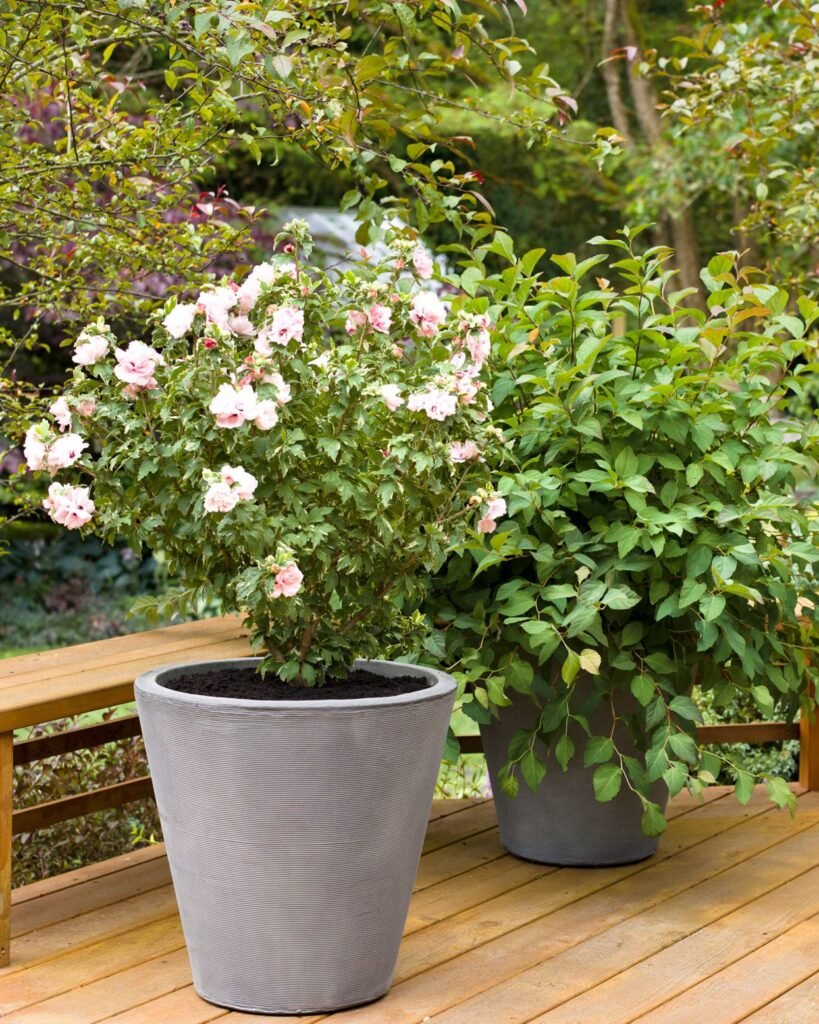
10. Creative Design Strategies
Compact shrubs offer versatility in container design:
- Single Shrub Display: Use a single dwarf shrub for a bold, structured statement.
- Mixed Shrub Arrangements: Combine contrasting foliage colors and textures in one large container for visual richness.
- Seasonal Blooms: Pair flowering shrubs with evergreen foliage to maintain year-round greenery.
- Layered Heights: Place taller shrubs at the back or center and smaller shrubs around edges to create depth.
- Edible and Aromatic Combos: Incorporate herbs like rosemary or dwarf citrus with flowering shrubs for a functional and fragrant garden.
Thoughtful arrangements make compact shrubs visually striking, lush, and multifunctional.
11. Seasonal Considerations
Container shrubs require adaptation to seasonal changes:
- Spring/Summer: Ideal growth period; maintain regular watering, fertilization, and pruning.
- Autumn: Reduce watering, and prepare containers for cooler weather; protect sensitive shrubs from frost.
- Winter: Move tender shrubs indoors or to sheltered areas; use mulch to insulate roots.
- Rotation: Replace annual flowering shrubs or companion plants seasonally to maintain vibrancy.
Seasonal planning ensures year-round interest and lushness in container gardens.
12. Benefits of Container Shrubs
Growing compact shrubs in containers offers multiple advantages:
- Space Utilization: Transform small patios, balconies, or indoor corners into green havens.
- Low Maintenance: Manageable growth reduces pruning and care workload.
- Aesthetic Flexibility: Containers allow easy rearrangement and seasonal updates.
- Functional Landscaping: Provides privacy screens, decorative focal points, or aromatic fragrance.
- Air Quality and Wellbeing: Dense foliage improves air quality and contributes to relaxation.
Container shrubs provide structure, beauty, and practicality in urban and small-space gardening.
Conclusion
Compact shrubs are ideal candidates for container gardening, offering structure, foliage, blooms, and visual appeal in limited spaces. By carefully selecting appropriate shrub species, choosing suitable containers, providing nutrient-rich soil, ensuring adequate sunlight, and maintaining proper watering, fertilization, and pruning, gardeners can enjoy lush, thriving container displays year-round.
Creative arrangements, layering, and seasonal planning allow compact shrubs to shine as focal points, privacy screens, or part of a larger container garden ensemble. With thoughtful design and attentive care, even small urban spaces can be transformed into verdant, lush gardens full of texture, color, and life.
A well-maintained container shrub garden not only enhances the aesthetics of your home but also provides a green sanctuary that combines beauty, functionality, and relaxation in compact, manageable packages.
